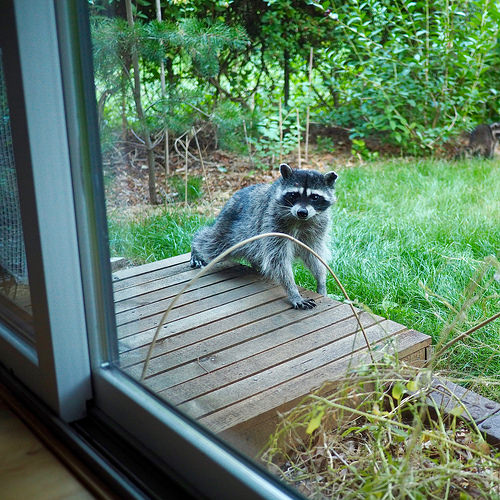Why live trapping and relocation of wildlife doesn’t work
by Ontario SPCA and Humane Society | Wildlife Fact Sheets | August 14, 2017
Home developments are impeaching more and more on wildlife’s habitat all the time. With a little understanding, patience and a few precautions and common sense steps, we can all enjoy the wonderfully interesting wild animals who share our backyards and cities. So, if you have an unwelcome visitor frequenting your property, what do you do? Live trapping is not the answer. Read these tips from our Animal Care Fact Sheet, Why Live Trapping and Relocation Don’t Work.
Live trapping may seem like an immediate and easy fix to your wildlife problem, however it is only a temporary solution. The homeowner should take action to determine what attracted the animal to their property. Then, remove and/or repair the sources of attraction. Otherwise, another animal will take up residence once the other (trapped) animal has been removed. This can therefore turn into a frustrating, reoccurring problem. Wildlife-proofing your home and property is a long-term, preventative, and humane solution.
Why can’t I trap wildlife and move the animal(s) to another area?
Many people think that live trapping is a humane option because it does not result in the animal’s immediate death. In reality, live-trapping and relocation is inhumane, cruel and ill-advised for the following reasons.
-

photo credit: hlehto Our raccoon friend in Portland via photopin (license) Live-trapping causes great stress for the trapped animal, and they may seriously injure themselves as they desperately attempt to escape.
- The trapped animal is exposed to the elements and can suffer from painful cases of frostbite and heat stroke. If an animal is left in the trap it will suffer for days and will eventually die of exposure or starvation.
- Domestic animals and other wildlife may harass the trapped animal causing further stress or injury. Trapped and relocated animals may be separated from their young, and the dependent young left behind will die an inhumane death.
- Relocated animals are at an extreme disadvantage in a new environment. They have to find food, water and shelter in an unfamiliar territory. There may be territorial disputes between the relocated animal and resident animals that can lead to injury and even death. Relocated animals may also spread disease to the resident wildlife population, therefore causing other animals to become ill and/or die.
In Ontario, it is illegal to trap and relocate animals from the site where they were captured according to the Ministry of Natural Resources’ Fish and Wildlife Conservation Act. Improper use of a live trap, which results in animal suffering, could lead to animal cruelty charges.
Categories
Testimonial
Totally rock
All of your wonderful staff & volunteers totally rock. The amazing compassion and work you provide on a daily basis is incredible.